Ngoc-Bao Nguyen
Model Inversion Attacks on Vision-Language Models: Do They Leak What They Learn?
Aug 06, 2025Abstract:Model inversion (MI) attacks pose significant privacy risks by reconstructing private training data from trained neural networks. While prior works have focused on conventional unimodal DNNs, the vulnerability of vision-language models (VLMs) remains underexplored. In this paper, we conduct the first study to understand VLMs' vulnerability in leaking private visual training data. To tailored for VLMs' token-based generative nature, we propose a suite of novel token-based and sequence-based model inversion strategies. Particularly, we propose Token-based Model Inversion (TMI), Convergent Token-based Model Inversion (TMI-C), Sequence-based Model Inversion (SMI), and Sequence-based Model Inversion with Adaptive Token Weighting (SMI-AW). Through extensive experiments and user study on three state-of-the-art VLMs and multiple datasets, we demonstrate, for the first time, that VLMs are susceptible to training data leakage. The experiments show that our proposed sequence-based methods, particularly SMI-AW combined with a logit-maximization loss based on vocabulary representation, can achieve competitive reconstruction and outperform token-based methods in attack accuracy and visual similarity. Importantly, human evaluation of the reconstructed images yields an attack accuracy of 75.31\%, underscoring the severity of model inversion threats in VLMs. Notably we also demonstrate inversion attacks on the publicly released VLMs. Our study reveals the privacy vulnerability of VLMs as they become increasingly popular across many applications such as healthcare and finance.
Uncovering the Limitations of Model Inversion Evaluation -- Benchmarks and Connection to Type-I Adversarial Attacks
May 08, 2025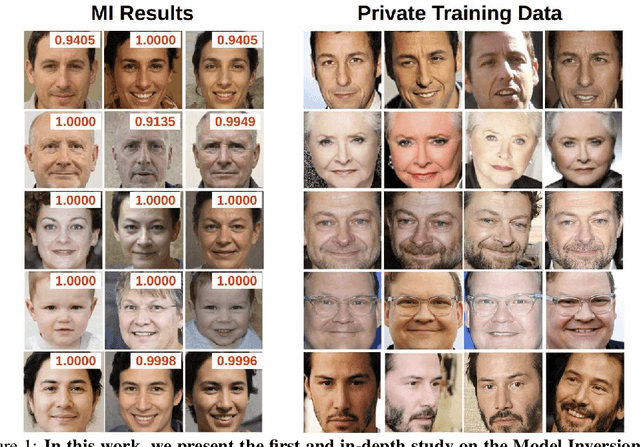
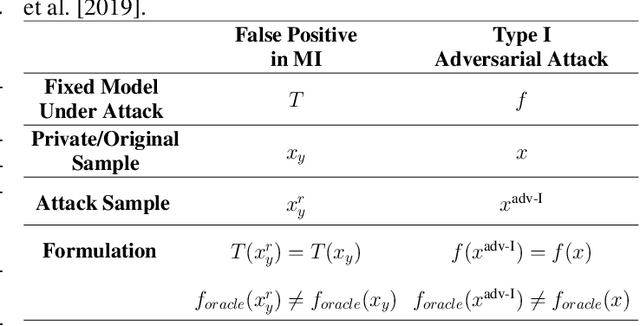

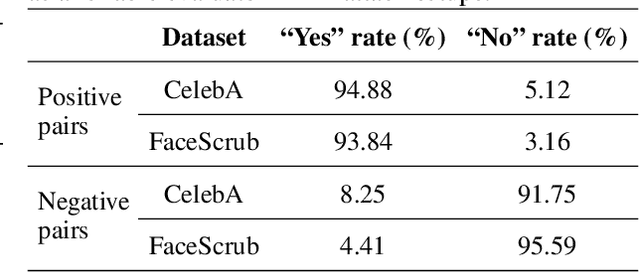
Abstract:Model Inversion (MI) attacks aim to reconstruct information of private training data by exploiting access to machine learning models. The most common evaluation framework for MI attacks/defenses relies on an evaluation model that has been utilized to assess progress across almost all MI attacks and defenses proposed in recent years. In this paper, for the first time, we present an in-depth study of MI evaluation. Firstly, we construct the first comprehensive human-annotated dataset of MI attack samples, based on 28 setups of different MI attacks, defenses, private and public datasets. Secondly, using our dataset, we examine the accuracy of the MI evaluation framework and reveal that it suffers from a significant number of false positives. These findings raise questions about the previously reported success rates of SOTA MI attacks. Thirdly, we analyze the causes of these false positives, design controlled experiments, and discover the surprising effect of Type I adversarial features on MI evaluation, as well as adversarial transferability, highlighting a relationship between two previously distinct research areas. Our findings suggest that the performance of SOTA MI attacks has been overestimated, with the actual privacy leakage being significantly less than previously reported. In conclusion, we highlight critical limitations in the widely used MI evaluation framework and present our methods to mitigate false positive rates. We remark that prior research has shown that Type I adversarial attacks are very challenging, with no existing solution. Therefore, we urge to consider human evaluation as a primary MI evaluation framework rather than merely a supplement as in previous MI research. We also encourage further work on developing more robust and reliable automatic evaluation frameworks.
Multimodal Preference Data Synthetic Alignment with Reward Model
Dec 23, 2024

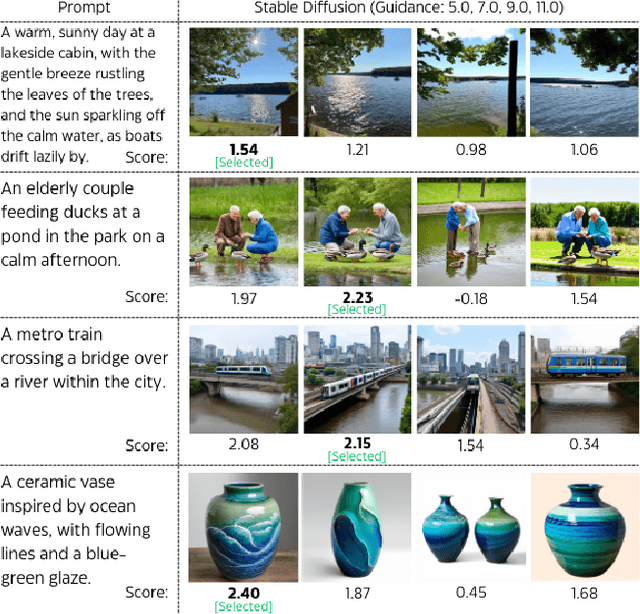

Abstract:Multimodal large language models (MLLMs) have significantly advanced tasks like caption generation and visual question answering by integrating visual and textual data. However, they sometimes produce misleading or hallucinate content due to discrepancies between their pre-training data and real user prompts. Existing approaches using Direct Preference Optimization (DPO) in vision-language tasks often rely on strong models like GPT-4 or CLIP to determine positive and negative responses. Here, we propose a new framework in generating synthetic data using a reward model as a proxy of human preference for effective multimodal alignment with DPO training. The resulting DPO dataset ranges from 2K to 9K image-text pairs, was evaluated on LLaVA-v1.5-7B, where our approach demonstrated substantial improvements in both the trustworthiness and reasoning capabilities of the base model across multiple hallucination and vision-language benchmark. The experiment results indicate that integrating selected synthetic data, such as from generative and rewards models can effectively reduce reliance on human-annotated data while enhancing MLLMs' alignment capability, offering a scalable solution for safer deployment.
On the Vulnerability of Skip Connections to Model Inversion Attacks
Sep 03, 2024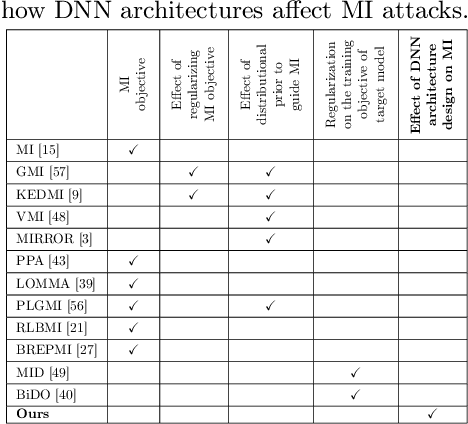
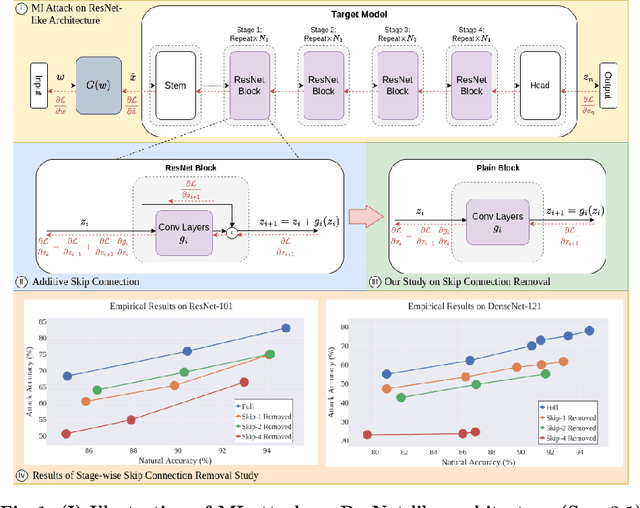
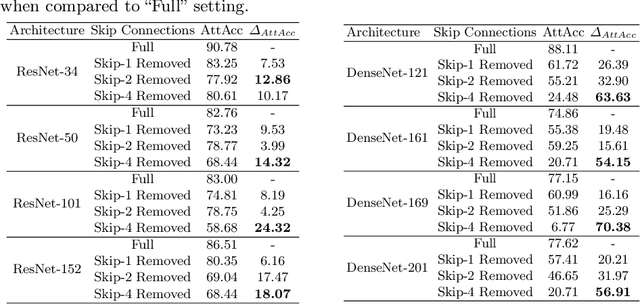
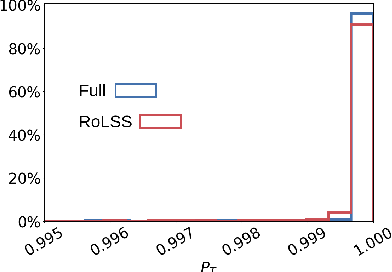
Abstract:Skip connections are fundamental architecture designs for modern deep neural networks (DNNs) such as CNNs and ViTs. While they help improve model performance significantly, we identify a vulnerability associated with skip connections to Model Inversion (MI) attacks, a type of privacy attack that aims to reconstruct private training data through abusive exploitation of a model. In this paper, as a pioneer work to understand how DNN architectures affect MI, we study the impact of skip connections on MI. We make the following discoveries: 1) Skip connections reinforce MI attacks and compromise data privacy. 2) Skip connections in the last stage are the most critical to attack. 3) RepVGG, an approach to remove skip connections in the inference-time architectures, could not mitigate the vulnerability to MI attacks. 4) Based on our findings, we propose MI-resilient architecture designs for the first time. Without bells and whistles, we show in extensive experiments that our MI-resilient architectures can outperform state-of-the-art (SOTA) defense methods in MI robustness. Furthermore, our MI-resilient architectures are complementary to existing MI defense methods. Our project is available at https://Pillowkoh.github.io/projects/RoLSS/
Defending against Model Inversion Attacks via Random Erasing
Sep 02, 2024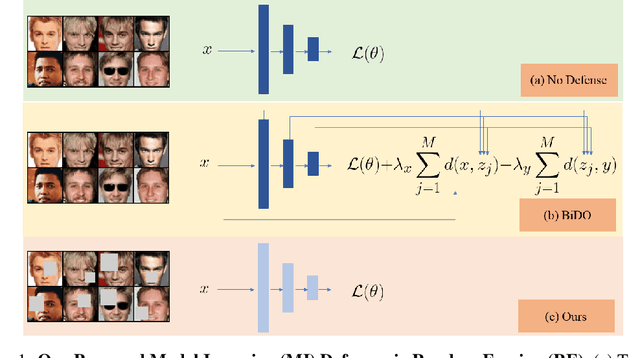
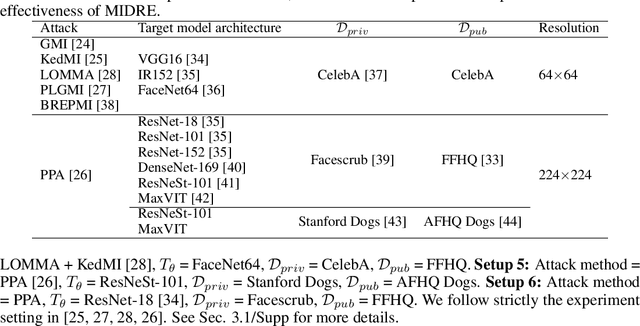
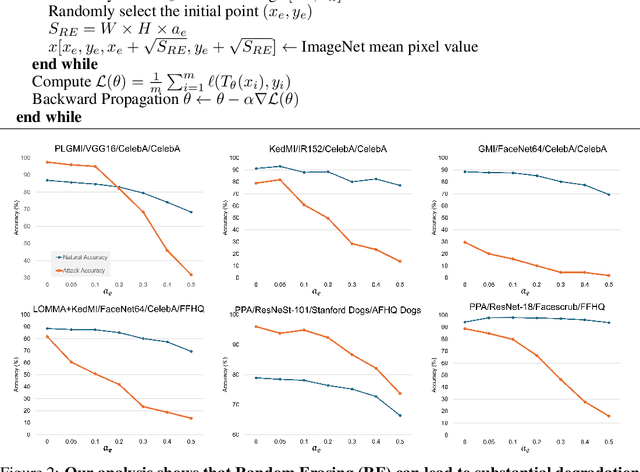

Abstract:Model Inversion (MI) is a type of privacy violation that focuses on reconstructing private training data through abusive exploitation of machine learning models. To defend against MI attacks, state-of-the-art (SOTA) MI defense methods rely on regularizations that conflict with the training loss, creating explicit tension between privacy protection and model utility. In this paper, we present a new method to defend against MI attacks. Our method takes a new perspective and focuses on training data. Our idea is based on a novel insight on Random Erasing (RE), which has been applied in the past as a data augmentation technique to improve the model accuracy under occlusion. In our work, we instead focus on applying RE for degrading MI attack accuracy. Our key insight is that MI attacks require significant amount of private training data information encoded inside the model in order to reconstruct high-dimensional private images. Therefore, we propose to apply RE to reduce private information presented to the model during training. We show that this can lead to substantial degradation in MI reconstruction quality and attack accuracy. Meanwhile, natural accuracy of the model is only moderately affected. Our method is very simple to implement and complementary to existing defense methods. Our extensive experiments of 23 setups demonstrate that our method can achieve SOTA performance in balancing privacy and utility of the models. The results consistently demonstrate the superiority of our method over existing defenses across different MI attacks, network architectures, and attack configurations.
Model Inversion Robustness: Can Transfer Learning Help?
May 09, 2024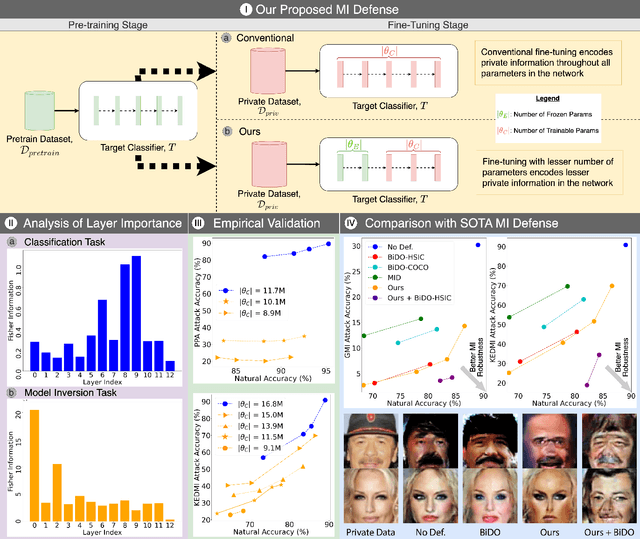

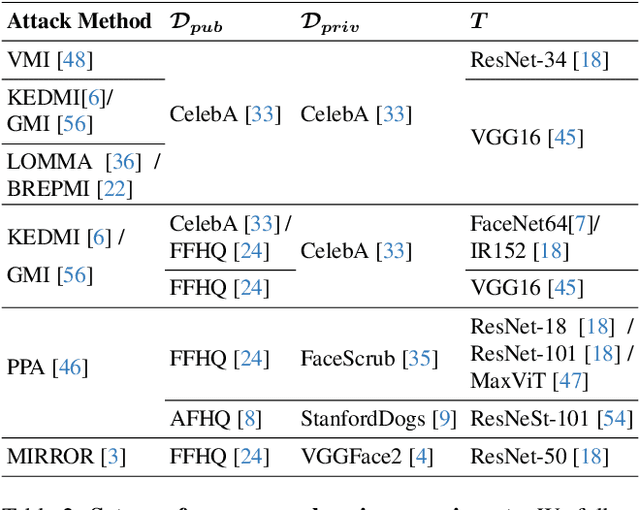
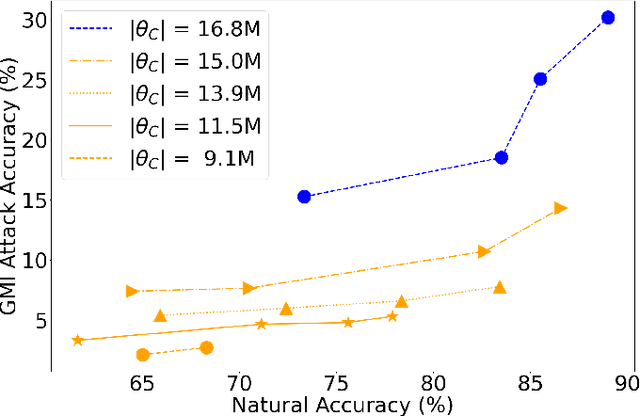
Abstract:Model Inversion (MI) attacks aim to reconstruct private training data by abusing access to machine learning models. Contemporary MI attacks have achieved impressive attack performance, posing serious threats to privacy. Meanwhile, all existing MI defense methods rely on regularization that is in direct conflict with the training objective, resulting in noticeable degradation in model utility. In this work, we take a different perspective, and propose a novel and simple Transfer Learning-based Defense against Model Inversion (TL-DMI) to render MI-robust models. Particularly, by leveraging TL, we limit the number of layers encoding sensitive information from private training dataset, thereby degrading the performance of MI attack. We conduct an analysis using Fisher Information to justify our method. Our defense is remarkably simple to implement. Without bells and whistles, we show in extensive experiments that TL-DMI achieves state-of-the-art (SOTA) MI robustness. Our code, pre-trained models, demo and inverted data are available at: https://hosytuyen.github.io/projects/TL-DMI
Label-Only Model Inversion Attacks via Knowledge Transfer
Oct 30, 2023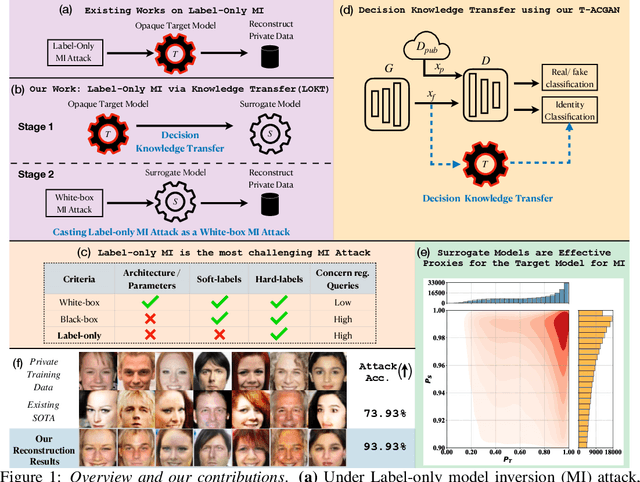
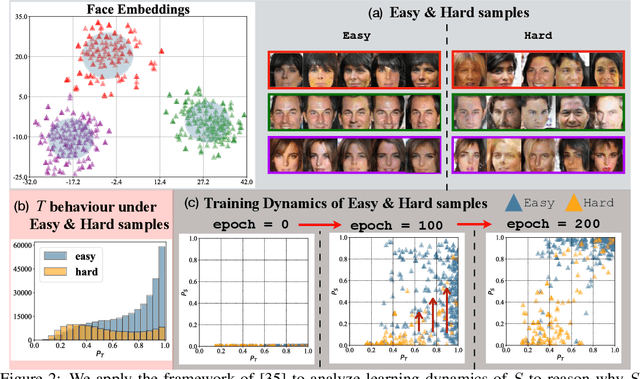
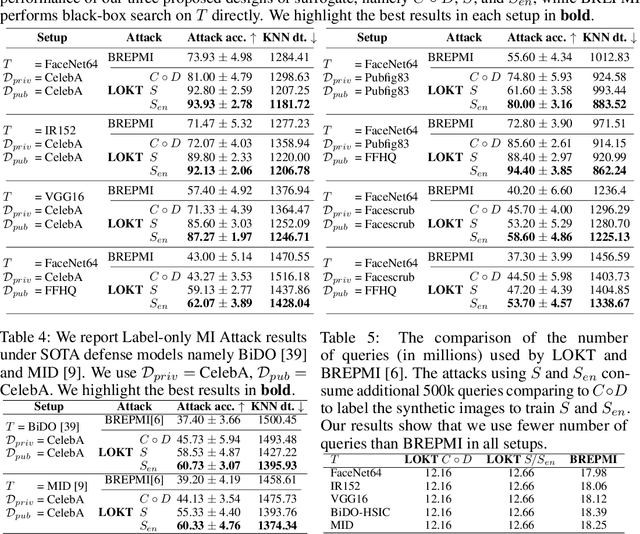
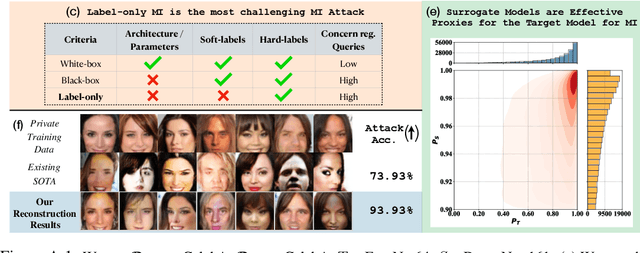
Abstract:In a model inversion (MI) attack, an adversary abuses access to a machine learning (ML) model to infer and reconstruct private training data. Remarkable progress has been made in the white-box and black-box setups, where the adversary has access to the complete model or the model's soft output respectively. However, there is very limited study in the most challenging but practically important setup: Label-only MI attacks, where the adversary only has access to the model's predicted label (hard label) without confidence scores nor any other model information. In this work, we propose LOKT, a novel approach for label-only MI attacks. Our idea is based on transfer of knowledge from the opaque target model to surrogate models. Subsequently, using these surrogate models, our approach can harness advanced white-box attacks. We propose knowledge transfer based on generative modelling, and introduce a new model, Target model-assisted ACGAN (T-ACGAN), for effective knowledge transfer. Our method casts the challenging label-only MI into the more tractable white-box setup. We provide analysis to support that surrogate models based on our approach serve as effective proxies for the target model for MI. Our experiments show that our method significantly outperforms existing SOTA Label-only MI attack by more than 15% across all MI benchmarks. Furthermore, our method compares favorably in terms of query budget. Our study highlights rising privacy threats for ML models even when minimal information (i.e., hard labels) is exposed. Our study highlights rising privacy threats for ML models even when minimal information (i.e., hard labels) is exposed. Our code, demo, models and reconstructed data are available at our project page: https://ngoc-nguyen-0.github.io/lokt/
Re-thinking Model Inversion Attacks Against Deep Neural Networks
Apr 04, 2023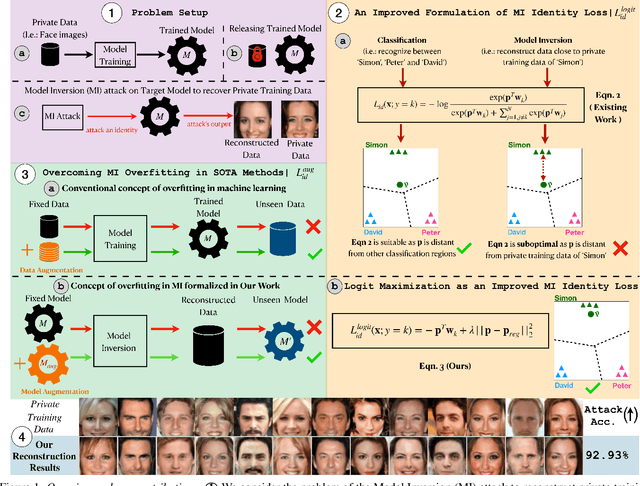
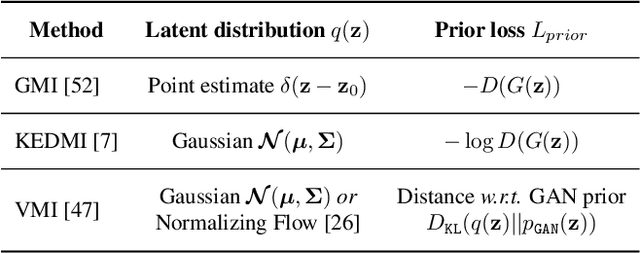
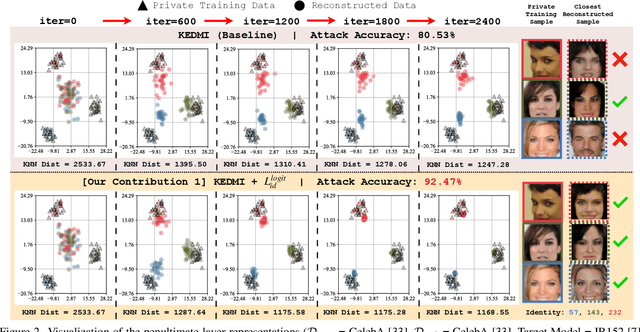

Abstract:Model inversion (MI) attacks aim to infer and reconstruct private training data by abusing access to a model. MI attacks have raised concerns about the leaking of sensitive information (e.g. private face images used in training a face recognition system). Recently, several algorithms for MI have been proposed to improve the attack performance. In this work, we revisit MI, study two fundamental issues pertaining to all state-of-the-art (SOTA) MI algorithms, and propose solutions to these issues which lead to a significant boost in attack performance for all SOTA MI. In particular, our contributions are two-fold: 1) We analyze the optimization objective of SOTA MI algorithms, argue that the objective is sub-optimal for achieving MI, and propose an improved optimization objective that boosts attack performance significantly. 2) We analyze "MI overfitting", show that it would prevent reconstructed images from learning semantics of training data, and propose a novel "model augmentation" idea to overcome this issue. Our proposed solutions are simple and improve all SOTA MI attack accuracy significantly. E.g., in the standard CelebA benchmark, our solutions improve accuracy by 11.8% and achieve for the first time over 90% attack accuracy. Our findings demonstrate that there is a clear risk of leaking sensitive information from deep learning models. We urge serious consideration to be given to the privacy implications. Our code, demo, and models are available at https://ngoc-nguyen-0.github.io/re-thinking_model_inversion_attacks/
Towards Good Practices for Data Augmentation in GAN Training
Jun 09, 2020
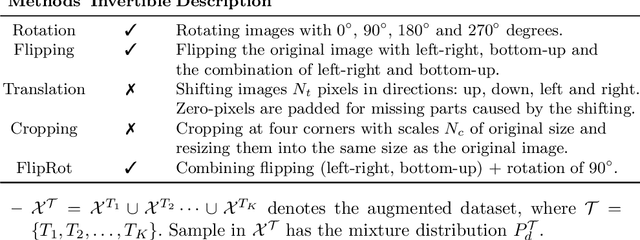


Abstract:Recent successes in Generative Adversarial Networks (GAN) have affirmed the importance of using more data in GAN training. Yet it is expensive to collect data in many domains such as medical applications. Data Augmentation (DA) has been applied in these applications. In this work, we first argue that the classical DA approach could mislead the generator to learn the distribution of the augmented data, which could be different from that of the original data. We then propose a principled framework, termed Data Augmentation Optimized for GAN (DAG), to enable the use of augmented data in GAN training to improve the learning of the original distribution. We provide theoretical analysis to show that using our proposed DAG aligns with the original GAN in minimizing the JS divergence w.r.t. the original distribution and it leverages the augmented data to improve the learnings of discriminator and generator. The experiments show that DAG improves various GAN models. Furthermore, when DAG is used in some GAN models, the system establishes state-of-the-art Fr\'echet Inception Distance (FID) scores.
Self-supervised GAN: Analysis and Improvement with Multi-class Minimax Game
Nov 16, 2019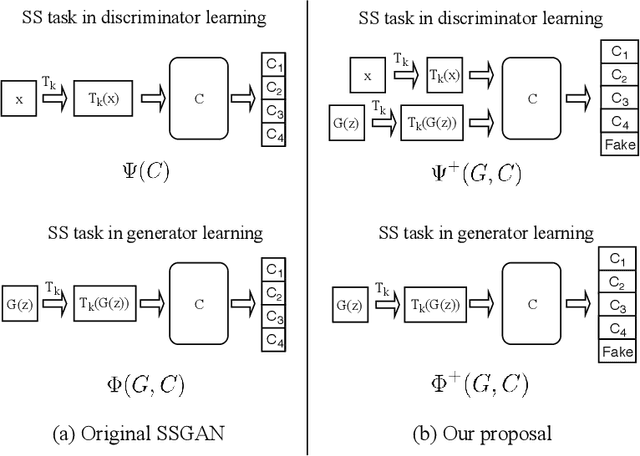
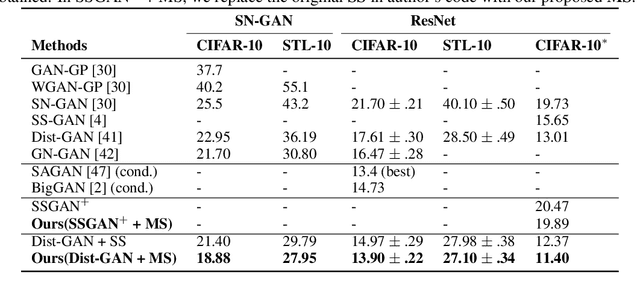


Abstract:Self-supervised (SS) learning is a powerful approach for representation learning using unlabeled data. Recently, it has been applied to Generative Adversarial Networks (GAN) training. Specifically, SS tasks were proposed to address the catastrophic forgetting issue in the GAN discriminator. In this work, we perform an in-depth analysis to understand how SS tasks interact with learning of generator. From the analysis, we identify issues of SS tasks which allow a severely mode-collapsed generator to excel the SS tasks. To address the issues, we propose new SS tasks based on a multi-class minimax game. The competition between our proposed SS tasks in the game encourages the generator to learn the data distribution and generate diverse samples. We provide both theoretical and empirical analysis to support that our proposed SS tasks have better convergence property. We conduct experiments to incorporate our proposed SS tasks into two different GAN baseline models. Our approach establishes state-of-the-art FID scores on CIFAR-10, CIFAR-100, STL-10, CelebA, Imagenet $32\times32$ and Stacked-MNIST datasets, outperforming existing works by considerable margins in some cases. Our unconditional GAN model approaches performance of conditional GAN without using labeled data. Our code: \url{https://github.com/tntrung/msgan}
 Add to Chrome
Add to Chrome Add to Firefox
Add to Firefox Add to Edge
Add to Edge